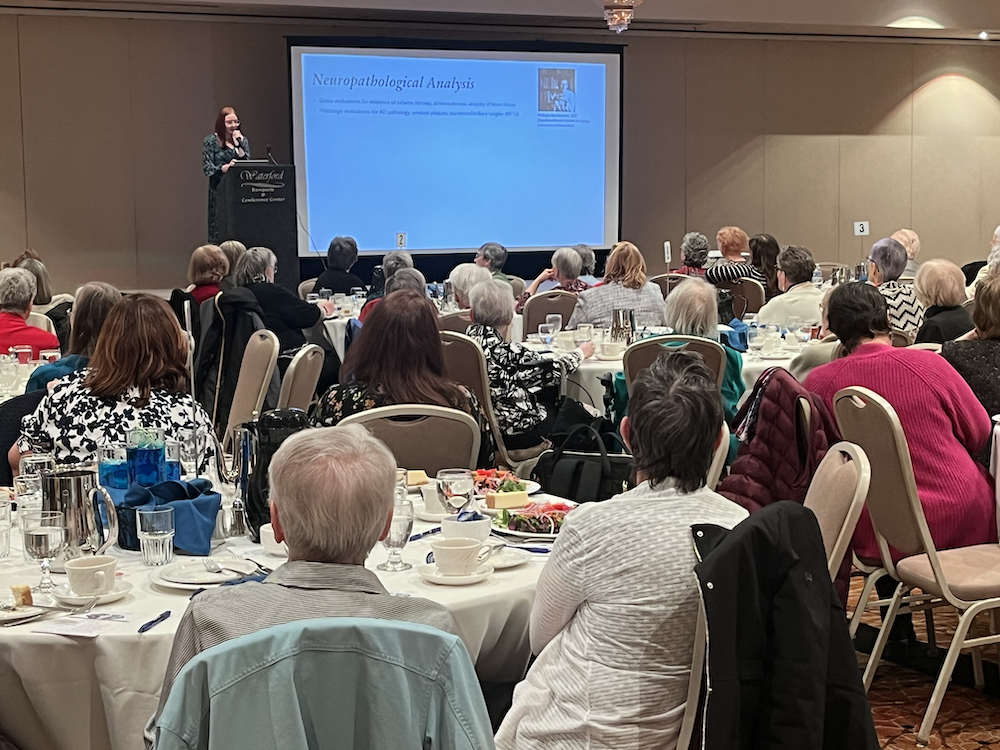By Sister Mary Fitzgerald, SSND

On Thursday, April 10, the School Sisters of Notre Dame held a Women's Leadership Luncheon in the Chicago suburb of Elmhurst. The luncheon topic was the Nun Study.
Many Chicago-area Sisters attended, as did Sisters and staff from other parts of the province.
In addition to the wonderful education we received, we enjoyed a delicious luncheon and great companionship.
After a welcome from Laura Lang, AMSSND Director of Development, and a keynote introduction by Amanda Watson, SSND Representative to the Nun Study, Doctor Margaret (Maggie) Flanagan, Director of the Nun Study, gave the keynote address.
Dr. Flanagan discussed the methodology used in the study, the key findings, and the future directions determined as a result. Note: while the Nun Study is ongoing, the donation period is complete. No new donations are being accepted.
Methodology:
Prior to the Nun Study, the study of Alzheimer's could only be done on the brain after death, using the brains of those who obviously suffered from the disease.
One of the many advantages of the Nun Study is that it includes both diseased and healthy brains, thanks to the willingness of our Sisters to donate to the project.
Those donors include SSNDs whose lives and behaviors were quite similar:
* They were 75 years of age or older when they agreed to donate their brains.
* They lived and worked in similar settings.
* They were detailed record keepers.
* They were of a range of cognitive ability and age.
Sixty-six percent of the Sisters asked to participate did in fact participate in the whole study, which consisted not only of donating their brains after death but also of taking part in on-going activities and tests while they were alive.
Researchers had access to the medical records and cognitive assessments of the Sister participants.
The research study tried to link the level of education and the condition of the brain later in life.
It raised the question of how pathology in the brain correlates with Alzheimer’s Disease.
Key Findings:
One of the most amazing findings is that brain functioning in early life affects the gravity of brain pathology later!
The Nun Study shows this in the physiology of the brains of our SSNDs, leading researchers to conclude that high early-life linguistic ability is linked to better cognition later in life.
They determined this from documents written by the Sister participants when they were young adults.
Lower complexity in these documents, or lower educational attainment, was linked to higher incidence of Alzheimer’s.
Those who showed higher linguistic ability in their early writings also seemed to have extra brain power to counter evidence of brain pathologies identified after death.
Some of those pathologies were given as hippocampal sclerosis of aging, and limbic encephalopathy.
Future Directions:
The new directions evolving from the study include personalized medicine, different therapies for different cases, the use of AI in diagnosis and treatment, among others.
The Nun Study is truly seminal work!
